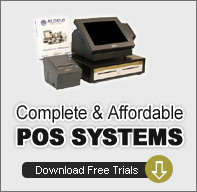History of POS SystemsThe first POS systems were rolled out by IBM in the 1970s. Early IBM backed mainframe systems had “dumb” terminals that were wired back to a mainframe “controller”. The mainframe did all the processing. The terminals just painted a screen and had no real processing capability on their own. This configuration actually represented the standard set-up for businesses that were transitioning to “computer” based systems. The Pathmark supermarket stores in New York and New Jersey and the Dillards department stores in California were two of the early adopters of this technology. By and large, most retail establishments were still using old fashioned cash registers, or the new electronic cash registers, which were the equivalent of electric type writers combined with calculators. It wasn’t until the beginning of the 1990s that the idea of personal computers running software could automate the functionality of a retail store. This is when hardware became capable of running software programs that had rich functionality and an intuitive graphical user interface (think Apple or Windows) at a reasonable price and without having to occupy the entire floor of a building. To be fair, the original POS system was actually developed by a restauranteur in New York named Gene Moshel on an Apple computer in 1978. Mosher takes credit for the first development of order-entry POS software on a PC, the first development of remote printing in the kitchen using an Apple Silentype in June, 1979, the first development of a color-graphical user interface and touch screen in POS, with an Atari 520ST, in 1986 and the first development of a color-graphical user interface and touch-screen in POS for UNIX in 1995, Linux in 1997, and FreeBSD in 1998. His original software was used to run his own restaurant (a deli) in New York. He eventually started his own company, ViewTouch, which still exists today. Today, there are hundreds of software vendors making software for POS. The software runs on all types of machines and different operating systems (OS), although Windows variations (XP, Windows Embedded, known as WEPOS and Windows Server) dominate the industry. Large businesses run via a client server model in which there is a dedicated database server, which all the other stations talk to for retrieving and storing data. Even small businesses like restaurants can run on this model. The industry continues to grow rapidly as more and more businesses realize the value to be gained by adopting POS. Since entry level systems can be set up for under $3000 with leasing arrangements available in many cases for even better entry point pricing, adoption continues to grow rapidly. |
Copyright © touchPOS.net. All rights reserved.








